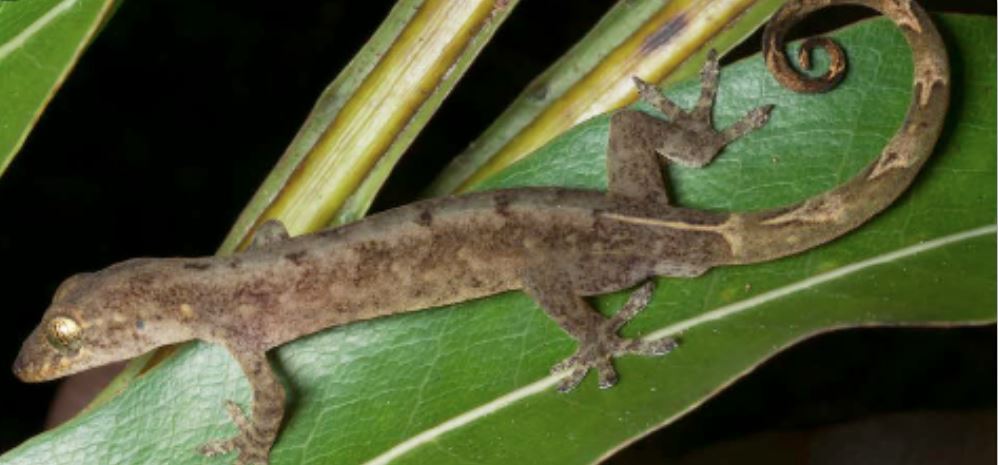
A new species of the Philippine False Gecko discovered in the Bicol region has been officially published.
The unique specimen first photographed and observed by independent field biologist Jason B. Fernandez in 2013 led to its eventual discovery and publication.
The discovery was reported in an article in the Herpetologica journal authored by a group of international researchers led by Rafe M. Brown, along with local researchers Camila G. Meneses from the University of the Philippines Los Banos Museum of Natural History, and Michael A. Cuesta and Michael A. Clores from Ateneo de Naga University.
The article, published on September 9, 2020, describes the Bicol Hollow-dwelling Forest Gecko (Pseudogekko hungkag) as the “secretive, delicate, slender-bodied, arboreal members of an obligate forest specialist clade” which was more diverse than previously assumed.
The new False Gecko is endemic to the Philippines. Six new species of the evasive Pseudogekko have been recognized in the last decade, with several of them appearing to be “rare, have restricted geographic ranges, or exhibit patchy, fragmented areas of occurrence.”
The discovered species has a tendency to hide in hollow areas, making them difficult to find. The ability serves as an effective defense mechanism against predators, says Dr. Rafe Brown, who spearheaded the discovery effort.
According to the researchers, its name Pseudogekko hungkag was “derived from the Filipino adjective hungkag, meaning ‘‘hollow’’ or ‘‘empty,’’ which is used in reference to the new species’ unique use of hollow cavities and crevices (hollow bamboo trunks/stems, cavities in tree branches, and other tube-shaped, or sheltered microhabitats).”
The study reports on the discovery of a second Luzon Island species of the P. brevipes complex which typically have diminutive bodies. The new species also constitutes an exception to “the general appearance of other members of the P. brevipes complex, in that it has a relatively heavy-bodied, robust stature, separating it phenotypically from all members of the group.”
“Our new species constitutes the second Luzon lineage in this group of rainforest species which was considered previously to be restricted to the Negros-Panay and Mindanao Pleistocene aggregate island complexes [PAICs] in the central and southern landmasses of the archipelago),” the experts said.
The group posits that more Pseudogekko hungkag could be found in Mt. Bulusan, Mt. Mayon, Mt. Malinao, Mt. Isarog, and the Caramoan Peninsula. However, conservation efforts posed challenges due to the nature of the protected areas.
Camila Meneses, a junior researcher at the University of the Philippines Los Baños (UPLB) Museum of Natural History, says that biologists have had a hard time conducting scientific research on Mt. Bulusan, a fairly active volcano in Sorsogon.
The new species’ conservation status has yet to be assessed due to the lack of available biodiversity information for the major remaining forests of the Bicol Peninsula.
Philippine wildlife has been reported to be thriving amid the ongoing community lockdowns to mitigate the spread of the COVID-19 virus.
Nineteen new whale sharks have been sighted in Donsol, Sorsogon waters since the beginning of 2020.
Apo Reef’s critically endangered sea turtles have doubled in numbers amid the lockdown to curb the spread of the coronavirus disease.
Rare Luzon Bleeding-Heart doves have also returned to the Philippines after being under the care of Singapore conservation for 8 years.
SEND CHEERS in the comments below to the people of Bicol for the discovery of the new species of the Philippine False Gecko.
Want to know how to be a Proud Pinoy? Like, Follow, Subscribe to GoodNewsPilipinas.com, and our socials on Facebook, Twitter, Instagram, Good News Pilipinas! TV on YouTube, for new story notifications, and e-mail newsletters for updates on more Filipino Pride stories.










